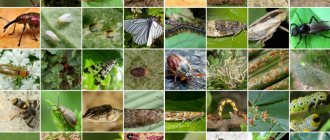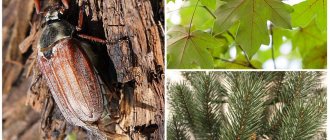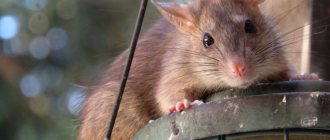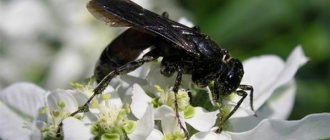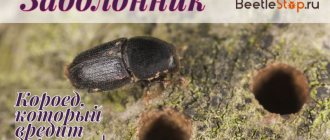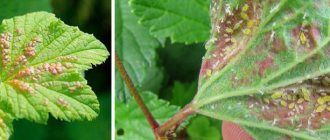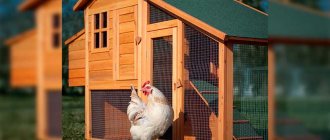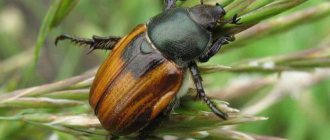Drill-driver DEKO GCD12DU3 Li-ion, 1x1.5Ah, Replaceable battery, 12 V, 32 Nm, 1 battery
1697 ₽ More details
Drill/driver DEKO DKCD16FU Li-ion in case + 63 accessories, 2x1.5Ah, Replaceable battery, 16 V, 32 Nm, 2 batteries
3168 ₽ More details
Tanning oils
Small in size, with a bright interesting color, attracting attention - this is the blister beetle. But appearances are deceiving and touching an insect in some conditions is life-threatening.
Blister beetles can be very dangerous
Blister beetles: photo
Blister beetles.
Who are the naryvniki
Name: family Blisters Lat.: Meloidae
Class: Insects - Insecta Order: Coleoptera - Coleoptera
| Habitats: | steppe, semi-desert, tropics |
| Dangerous for: | many plants, people and animals |
| Means of destruction: | depend on the species, from biological to chemical methods |
Blisters are representatives of one of the most famous families of Coleoptera. These insects stand out from the rest due to their bright color, the presence of strong poison in the blood and the interesting lifestyle of their larvae.
What do blisters look like?
Life cycle of a blister beetle.
Most members of the blister family are medium or large-sized bugs. Their body length can vary from 5 mm to 50 mm. The head is round or triangular in shape, and is equipped with complex faceted eyes and antennae. The latter consist of 8-11 segments and in most species they are slightly expanded towards the upper edge.
The pronotum in many representatives of this species is the narrowest part of the body. The elytra are quite elastic, oblong in shape and most often painted in bright colors. The most popular color options for elytra:
- bright red with black dots;
- black with yellow-orange spots and wide stripes;
- green with a metallic sheen;
- bright orange with small black spots;
- black or blue-black with a metallic sheen.
Female and male individuals usually do not have striking external differences, but in some species one can observe a strong increase in the abdomen in females, or modified antennae in males.
Blister beetles.
Many species of blister bugs boast well-developed wings, making them considered skilled flyers. The legs of representatives of this family are well adapted for walking and running. There are a number of spurs on the shins.
At the larval stage, blister bugs are very active and lead a predominantly parasitic lifestyle. Immediately after birth, they have well-developed legs and their main goal is to move to a place where there is a suitable food source for them. At the next stages of development, the larva spends almost all its time eating.
Own observations
When carefully studying the appearance of the T-shirt, I never ceased to be amazed at the perfection of the shape of the insect and the geometry of the elements of its body: the cup-elytra, the ideally rectangular body, the triangular head, the antennae-beads.
I was especially struck by the beetle’s paws and their incredibly complex structure. I thought that a human hand, compared to the foot of an ordinary T-shirt, looks much simpler.
While looking at the beetle, I couldn’t help but think how good it is that we don’t live in the times of giant insects. Humanity would have a noticeable increase in problems if it were to encounter something like this. Well, or it simply would not have become the dominant species, destroying the world in which it lives.
Man often tries to classify representatives of the animal world (in particular, insects) based solely on his own (not always ideal) considerations of the beautiful and useful. However, we should not forget that there are other standards that differ from human ones. In nature, every type of living being has the right to a place in the sun, regardless of whether it is useful or beautiful for the person who evaluates it.
Blister Habitat
For a long time, the habitat of blister beetles was limited to the countries of Europe, Asia and Africa. Insects prefer open steppe and semi-desert areas, and due to their heat-loving nature, the bulk of these beetles are found in tropical and subtropical zones. At the moment, these bright bugs can be found on all continents except Antarctica.
Schiffer's blister.
Within Russia, different types of blister beetles live in the following areas of the country:
- South-Eastern regions;
- European part of the country;
- Southwestern and Eastern Siberia;
- Primorye;
- North Caucasus.
How long do these insects live?
The Mike beetle lives very little. Their entire life span is until reproduction. The male dies immediately after mating. The female dies after laying eggs.
The female of this insect manages to lay from a couple to ten thousand eggs. She lays eggs in peculiar nests. These are not particularly deep holes, going 25-30 millimeters into the soil. She makes the masonry in the form of a heap and sprinkles it with earth. The female of this beetle never starts arranging a new nest without making sure that the previous one is completely complete.
Blister lifestyle
Adults of most blister species feed exclusively on food of plant origin. Some representatives are aphages and do not need food at all. The diet of adults may include:
- leaves;
- young shoots;
- inflorescences;
- flower nectar.
The larvae are mostly parasites . Blisters most often lay their eggs near the home of a potential victim, which could be:
- bees;
- wasps;
- grasshoppers;
- locusts
Larval transport
Small blister beetles on a flower.
Thanks to its well-developed limbs, soon after birth the larva climbs up plant stems and waits for a suitable candidate. As soon as a potential “breadwinner” appears on the horizon, it quietly attaches itself to his body. The unsuspecting victim delivers the dangerous parasite directly to its nest, where the larva descends from its “transport” and begins to consume food. Her diet may include:
- oviposition;
- larvae;
- food supplies stored by adult insects for their offspring.
Imago lifestyle
Clumsy insects with a thick body stay on the ground and crawl along stumps and herbaceous plants. Adults feed on cereals and love clover, dandelions, buttercups, anemones, and violets. If they find themselves near fields with vegetables, they damage agricultural crops. Beetles can be found in various biotypes: steppes, meadows, forest edges. To continue the life cycle, it is important to have nearby open areas suitable for solitary bees to settle.
Information. On a hot day, the beetles hide under the leaves; their soft abdomen is buried in the ground to avoid drying out.
Adults appear in spring, in April. After additional feeding they begin to mate. Beetles are slow and clumsy and do not run away from danger. Their hemolymph contains a highly toxic substance called cantharidin, which can kill small animals. When the oily liquid comes into contact with human skin, it causes an allergic reaction and blisters appear.
Interesting fact. In case of danger, the purple T-shirt falls to the ground and pretends to be dead. An additional defense mechanism is an oily, unpleasant-smelling liquid secreted from the joints of the limbs and abdomen.
In regions where the area of meadows is shrinking, construction is taking place, plowing is taking place, grass is being mowed, and the number of purple t-shirts is decreasing. Due to the lack of wings, beetles cannot move long distances in search of new habitats.
Reproduction
Mating is the finale of the life of males; after transferring the seed to the female, they die. For laying, a place is chosen close to a colony of solitary bees. The female digs a hole in soft soil. In one clutch the number of eggs reaches 1000 pieces. The female makes 2-3 separate burrows with eggs. After this, it also dies. The larvae appear after 30-40 days.
The blister family is characterized by hypermetamorphosis. This type of insect development is transitional between complete and incomplete metamorphosis. The first instar larvae, called triungulins, differ from the older instars. External differences are related to lifestyle. Triungulins are actively moving, looking for hosts for further development. Once in a bee's nest, they moult and turn into short-legged, worm-like parasites that feed on honey. Before true pupation, insects go through a “false pupae” stage.
Harm and benefit from blisters
Since adult blister beetles are phytophagous, some of their species can harm crops. This most often occurs during periods of strong population growth. The following plant species most often suffer from blister infestations:
- legumes;
- potato;
- strawberry;
- onion;
- oats;
- asparagus.
For people and animals
Blister venom is dangerous to people.
Due to the fault of adult blister beetles, not only plants, but also animals . Since the hemolymph of these insects contains a dangerous toxin, they pose a threat to almost all living organisms. The beetles spend most of their time on the leaves and inflorescences of the plant, so livestock grazing in the fields often eats them along with the grass. Such an addition to a plant-based meal can be dangerous to the life and health of the animal.
Blister venom can also be dangerous to humans . Even for an adult, healthy person, one insect eaten can cost his life. If you pick up this beetle with your bare hands, it will sense danger and, in self-defense, will release toxic hemolymph from special glands on its legs. After contact with a toxic substance, very unpleasant symptoms begin to appear on the skin:
- burning;
- itching;
- redness;
- formation of blisters and abscesses.
The only benefit that blister beetles can bring is pollination of plants. Species that feed on flower nectar contribute to the pollination of a huge number of different crops. Moreover, the reproduction of some representatives of the flora directly depends on these insects.
Blister larvae
Unlike adult beetles, blister beetle larvae do more good than harm. They often parasitize locust nests and destroy the young generation, which significantly affects the number of these insects. And as you know, locusts are the most dangerous pests of cultivated plants.
It is worth noting that the young generation of some types of blister bees prefer to parasitize in the nests of honey bees and such proximity can cause serious harm to the bee colony.
Nutrition
What the longhorned beetle eats depends on its habitat. Adult beetles feed on pistils and stamens of flowers, young bark and leaves of bushes and trees. Pieces of fallen or healthy bark, petioles, plant sap, pulp of cacti or other plants - this is what the longhorned beetle feeds on.
That is, an adult beetle is almost harmless. But the larva of the longhorned beetle is a scourge for trees, wooden buildings and wooden objects. They develop in trees and feed on wood, causing enormous harm to forests on the planet.
Many beetles were divided into subspecies precisely due to the choice of the type of tree they chose to feed their larvae. For example, the oak longhorned beetle prefers hardwood trees, oak, for example.
It can settle in oak stumps, as well as in places where the tree is damaged. This beetle is medium in size, 3 to 6 cm, black with a brown tint, and glossy like resin. The elytra are reddish at the tips. In addition to oak, he chooses beech, hornbeam, elm, and walnut for feeding future larvae.
The black or pine longhorned beetle prefers to choose coniferous trees. It is also called the ship beetle. Its larva inexorably destroyed even ready-made ship structures if they were built from infected pine. He himself feeds on pollen, pine needles and leaves.
The beetles that prefer coniferous trees for their clutches - larch, spruce, pine, also include the flat beetle, with a purple color.
The purple longhorned beetle itself feeds on the soft bark of young trees and tender young needles. But its larva causes damage to trees on an almost industrial scale. They continue to destroy wood, even harvested and cut for consumption. They also love to live close to humans, destroying buildings.
The most famous types of blisters
The blister family includes more than 2000 species, but only about 100 of them can be found within Russia. The most common types are:
ladybugs
What types of beetles are most recognizable in Russia ? Ladybugs have been familiar to us since childhood and are common not only here, but throughout the world. In total, about 4 thousand species of these creatures are known, which are united in the family of ladybugs. Their habitat is a variety of plant types. Some species spend their lives on trees and shrubs, others on field and meadow grasses.
Being members of a suborder of carnivorous beetles, these useful creatures, measuring approximately 5 mm in size, are known as aphid killers. They protect themselves from their enemies by spraying a yellow, unpleasant-smelling, poisonous liquid, a kind of milk. It is believed that it was for this feature that these insects were called ladybugs.
Their colors are always bright. The elytra usually have rich red or yellow colors, but sometimes brown, blue, black, and are also decorated with dots, the number and shade of which can vary. Representatives of this family also belong to the species of flying beetles .
Use of blisters in folk medicine
The toxic substance contained in the blood of blister beetles is called cantharidin. This toxin is very dangerous to human life and health, but despite this, it was widely used as an aphrodisiac until the 20th century.
Representatives of the species, the Spanish fly, were used to prepare “healing” powders, ointments and tinctures.
The use of such drugs, even in small quantities, ultimately led to disruption of the functioning of many vital organs, but even knowing this, many people continued to use them.
Spanish fly.
Ways to fight
Fighting the beetle
The main reason for the appearance of harmful insects in the house is the contaminated material that was used to build the house or outbuilding. If such a fate befell your property, then it is necessary to urgently take measures to get rid of the pest. After all, only timely control of the longhorned beetle will help save the house.
- Antifungal agent. They are used to treat the surface of the house in dry weather.
- If there are a small number of single holes, and there is no rotting or destruction of the wood, you can use the douching method. To do this, the insecticidal solution is injected into the detected passages using a syringe or a small oil can. Vaseline oil can also be used for this purpose. After introducing the oil mass into the hole, it must be filled with paraffin or wax.
- With a large number of winding passages, the douching method can be strengthened by impregnating the surface with the same insecticide. To obtain the maximum effect, you should capture some of the undamaged areas of the wood. After that, all the “houses” of pests must be sealed with any thick putty.
- Removing contaminated areas. In the event of massive contamination of wooden elements, they will have to be replaced with new ones.
- Temperature exposure method. Freezing or heating individual elements in a special chamber will help get rid of woodworms. The disadvantage of this method is the inability to carry out such a process on larger surfaces.
- Fumigators are another means of combating woodworms in the house. Thus, the smell of phosphine is not to the liking of barbel larvae. Therefore, the use of this chemical can only be used inside the home.
- Microwave disinfestation method. Microwave radiation generated by a microwave installation destroys baleen insects at various stages of their development. The use of this method does not require the evacuation of people and pets.
You won’t have to get rid of longhorned beetles if you carry out preventive treatment of your wooden house in a timely manner. To do this, use protective agents - complex antiseptics such as Pinotex, Phoenix or Senezh. Insects will not live in the wooden elements of the house if they are plastered.
In order not to have to fight the purple longhorned beetle, it is necessary to periodically remove dead wood, as well as properly store the wood in accordance with sanitary rules.
